Gradual Decluttering: Transform Your Home, One Step at a Time
Living in a clutter-free and organized space can have a profound impact on your mental and emotional well-being. However, the thought of decluttering your entire home can be really overwhelming. The good news is that you don’t have to do it all at once. Gradual decluttering is a sustainable and manageable approach that allows you to transform your home one step at a time. In this guide, I’ll share how to start gradual decluttering and provide you with practical tips to create a harmonious and clutter-free living environment.
Why Gradual Decluttering Works
Before diving into the how-to, it’s essential to understand the benefits of gradual decluttering:
- Reduced Stress: Tackling one area at a time is less overwhelming, making the process less stressful. Tackling the decluttering process in small, manageable tasks makes it much easier to do when you are time limited too.
- Sustainable Habits: Gradual decluttering encourages long-term habits by allowing you to make deliberate decisions about your belongings.
- Emotional Well-Being: As you clear clutter, you’ll experience a sense of accomplishment and a more serene living space.
- Mindful Choices: This approach encourages you to be intentional about what you keep, ensuring that your belongings truly serve a purpose or bring you joy.
- Reduce Declutter Remorse: By decluttering your home gradually, you run less risk of making hasty decisions and ending up getting rid of things you wish you hadn’t. Read more about declutter remorse here.
Getting Started with Gradual Decluttering:
Begin your gradual decluttering journey with these steps:
1. Set Clear Goals
Define your decluttering goals. What do you want to achieve? Whether it’s creating a more organized closet, simplifying your kitchen, or transforming your entire home, having clear objectives will keep you motivated.
2. Prioritize Areas
Identify the areas of your home that need decluttering the most. Start with the spaces that cause you the most stress or those that you use frequently, such as the kitchen, living room or bedroom. Rooms that don’t get used much can be put down the priority list.
3. Establish a Realistic Timeline
Gradual decluttering means taking your time. Don’t rush the process. Instead, set a realistic timeline for each area or room. It could be weekly, monthly, or even seasonally, depending on your schedule.
4. Gather Supplies
You’ll need some basic supplies to help with your decluttering efforts:
- Boxes or Bins: Use these to sort items into categories (keep, donate, discard).
- Trash Bags: For items that need to be thrown away.
- Labels and Markers: To clearly label boxes and containers.
- Cleaning Supplies: Cleaning as you declutter ensures your space remains fresh.
5. Start Small
Begin with a small area, like a drawer, closet, or shelf. Starting small builds momentum and helps you see progress quickly. Set aside some time each week to tackle a small area, and you’ll soon notice how these small steps transform your home.
Practical Tips for Gradual Decluttering
Now that you’ve set the stage, let’s delve into some practical tips for effective gradual decluttering:
1. The One-In, One-Out Rule
Adopt the “one-in, one-out” rule. For every new item you bring into your home, let go of an old one. This keeps the clutter from piling up again and is a great clutter prevention method.
2. Sort Items Into Categories
As you declutter, sort items into three main categories:
- Keep: Items you use regularly or truly love.
- Donate/Sell: Items in good condition that can benefit others.
- Discard: Items that are damaged, expired, or beyond repair.
3. Start with Clothing
Your closet is a great place to begin. Sort through your clothes and shoes, and donate or sell clothing you haven’t worn in the last year. Be ruthless in your decisions and keep only what you love and wear.

4. Declutter Sentimental Items Gradually
Sentimental items can be the most challenging to part with. Instead of tackling them all at once, set aside time to go through one sentimental category (e.g., photos, letters, mementos) periodically.
5. Limit Collectibles and Decor
If you’re an avid collector or have an abundance of decor items, consider downsizing. Keep only the most meaningful pieces and let go of the rest. Consider the space you have to display your collections and adjust your collection to fit.
6. Tackle Paper Clutter
Paper clutter can quickly accumulate. Create a system for handling mail, bills, and documents. Digitize what you can and shred or recycle what you no longer need.
7. Kitchen Simplification
Simplify your kitchen by getting rid of unused or duplicate gadgets and utensils. Keep only what you use regularly and what brings you joy. For more tips on how to declutter your kitchen you might like:
How to Declutter Kitchen Cupboards
10 Simple Steps to Declutter Your Kitchen
15 Things You Can Declutter From Your Kitchen RIGHT NOW
8. Address Digital Clutter
Digital clutter is just as important as physical clutter. Organize your digital files, photos, and emails regularly. Delete duplicates and old, irrelevant content.
9. Declutter Seasonally
Use the change of seasons as an opportunity to declutter. As you rotate your wardrobe, assess which clothing items you didn’t wear during the previous season and consider letting them go. Store last season’s clothes in vacuum bags so they stay clean and fresh, but frees up space in your wardrobe.
10. Take Advantage of Waiting Time
Use waiting time wisely. When you’re waiting for a meal to cook or for an appointment, take a few minutes to declutter a small area or organize a drawer.
11. Involve the Family
Get your family involved in the decluttering process. Assign tasks and encourage everyone to participate. Make it a family activity, and celebrate your progress together.
12. Evaluate Digital Subscriptions
Regularly review your digital subscriptions, such as streaming services or magazine subscriptions. Cancel those you no longer use or enjoy.
13. Assess Hobbies and Interests
If you have hobbies or interests that have changed over time, reassess related equipment, supplies, or collections. Keep only what aligns with your current interests.
14. Declutter Before Holidays and Special Occasions
Before major holidays or special occasions when you may receive gifts, take the opportunity to declutter to make space for new items.
15. Create a Decluttering Routine
Establish a routine for regular decluttering. This can include a weekly or monthly decluttering session focused on specific areas of your home.
Gradual Decluttering
Decluttering your home gradually is a sustainable approach that leads to long-lasting results. By setting clear goals, starting small, and following practical tips, you can create a more organized, peaceful, and enjoyable living space. Remember that gradual decluttering is a journey, not a destination. Enjoy the process of simplifying your life, one step at a time, and savor the benefits of a clutter-free home.


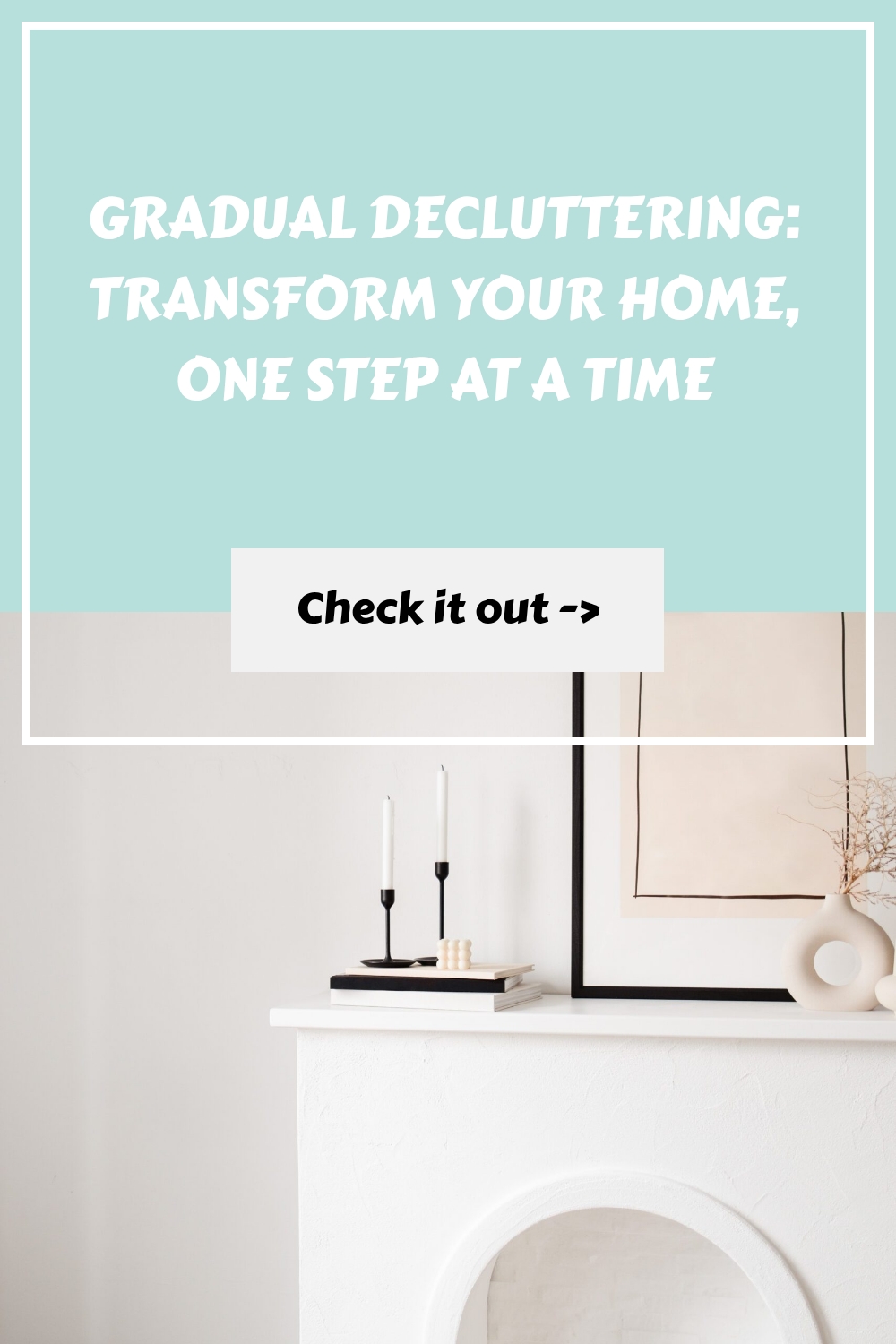

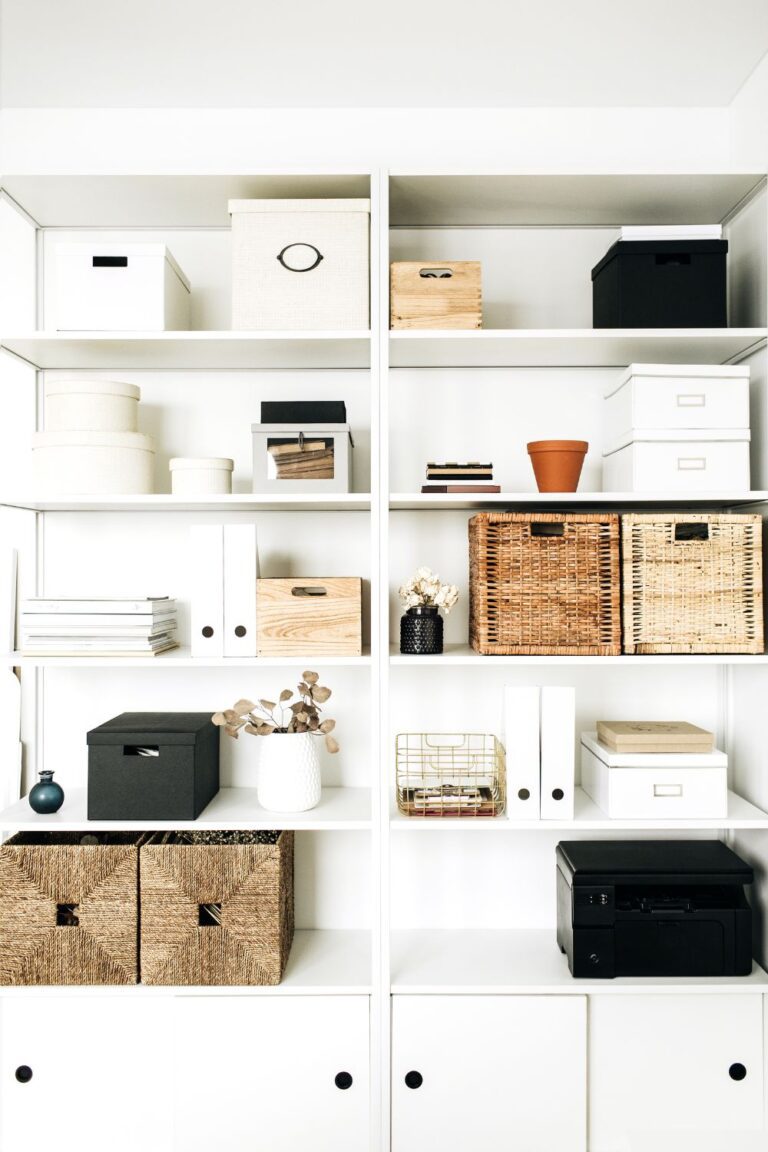


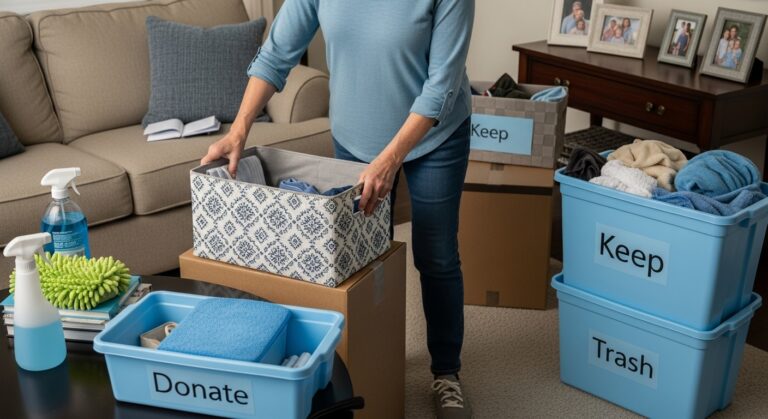
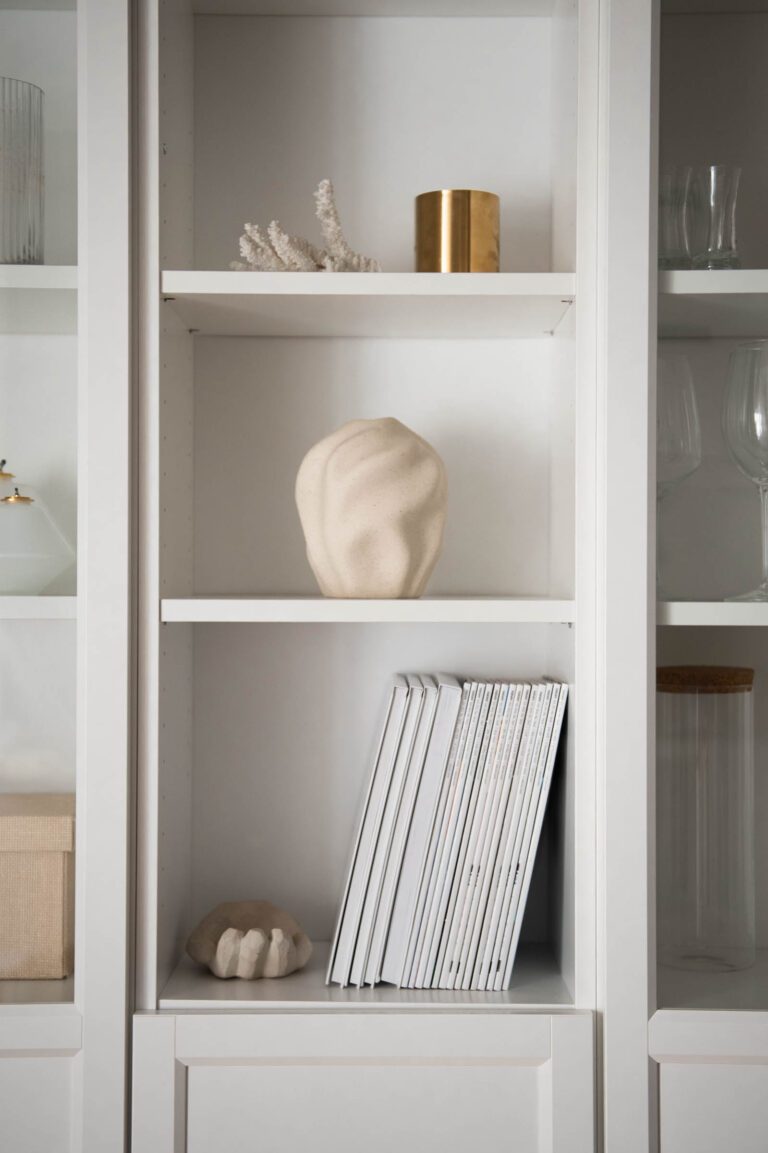
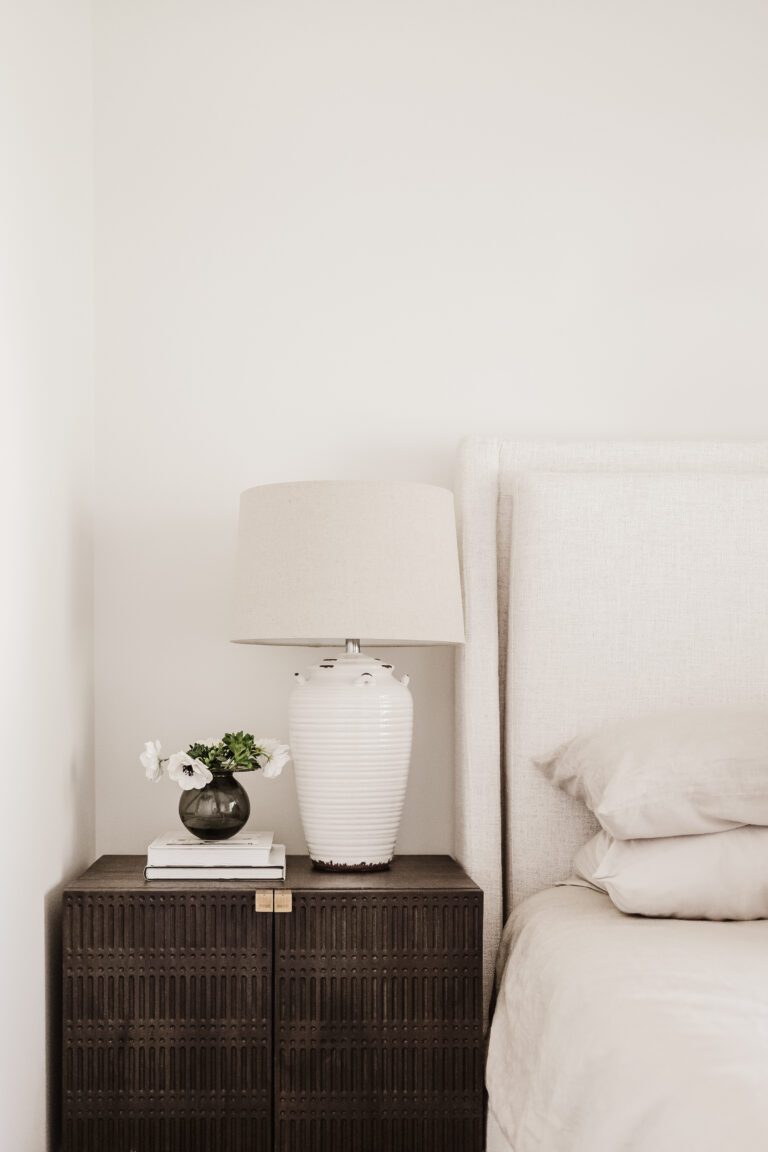
Great tips! I aspire to be decluttered like this. 🥹
Thank you so much!
Decluttering is an anti-anxiety method for me. It always takes some weight off of my shoulders and frees my mind a little
Mine too! I always feel like my mind is so cluttered if my home is, and I struggle to relax if my home is a mess. Thanks for commenting!
Great article! Love the concept of gradual decluttering, especially the use of waiting time. It’s utilizing the small chunks of time we have wisely that makes the biggest difference in long-term habits.
Sometimes it can seem really pressured to declutter all in one go so decluttering gradually is a great way to make positive changes. Thanks for stopping by!